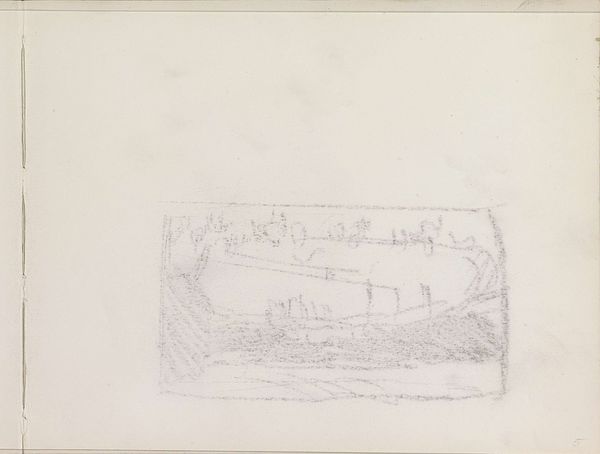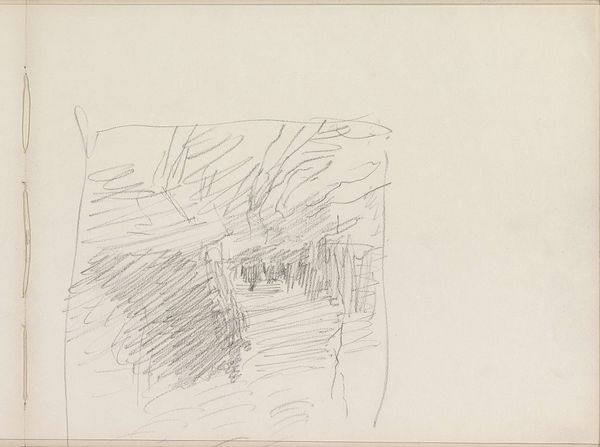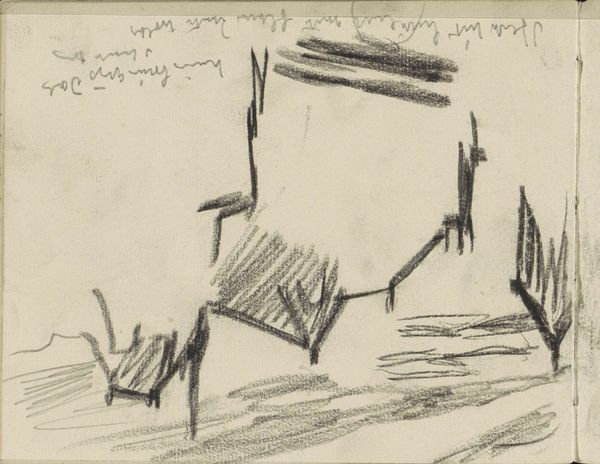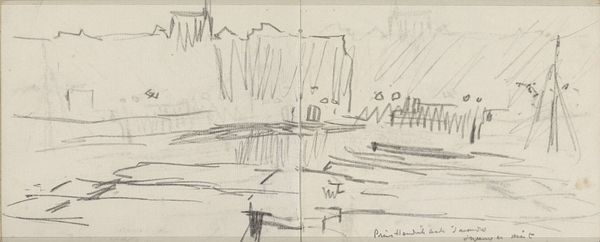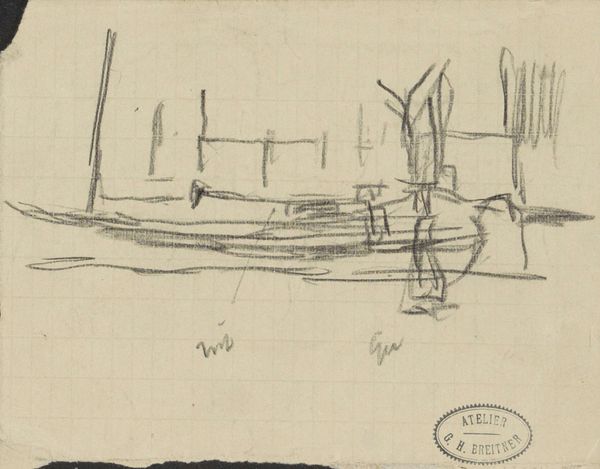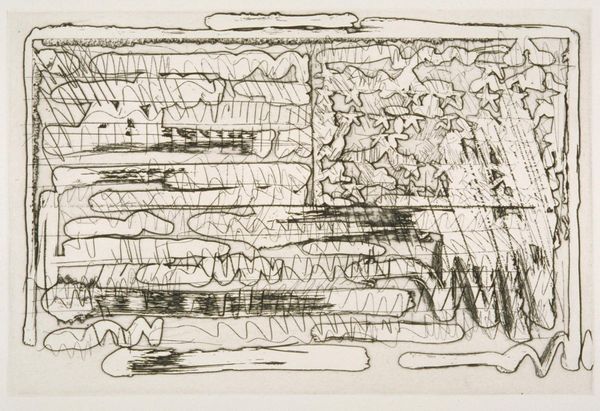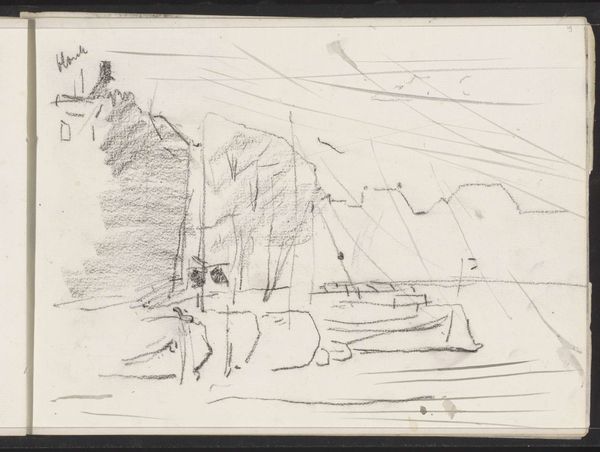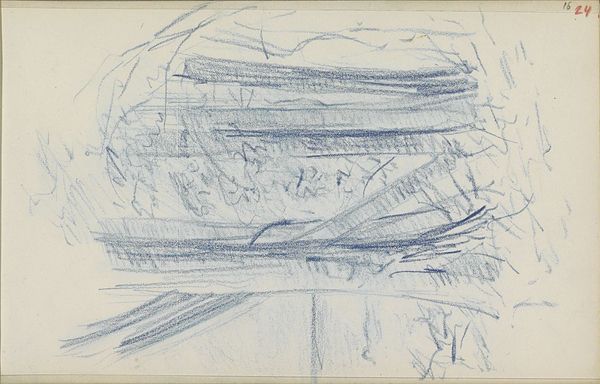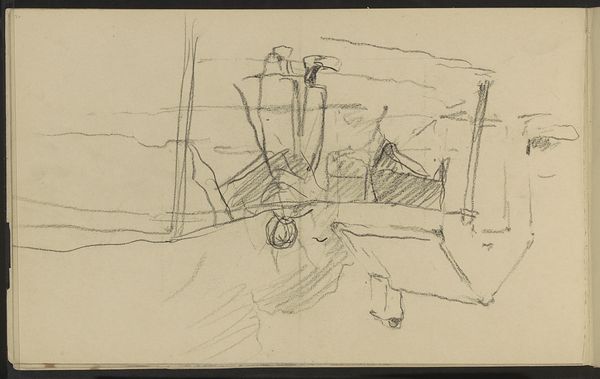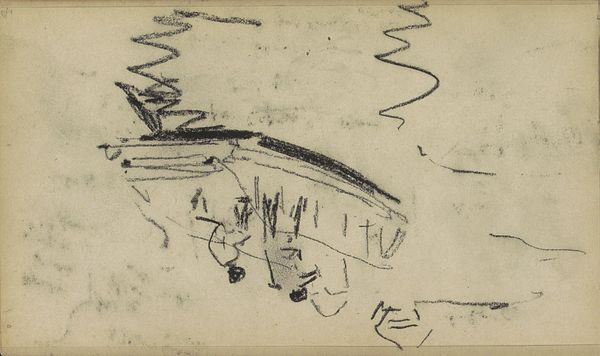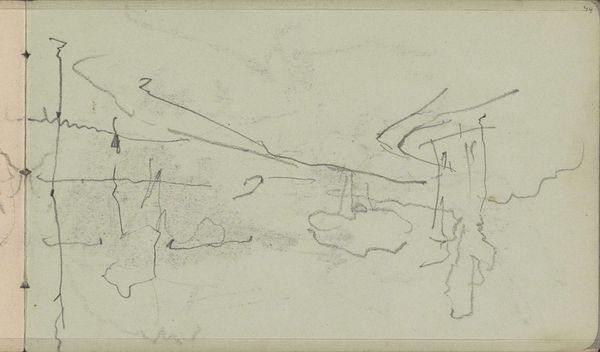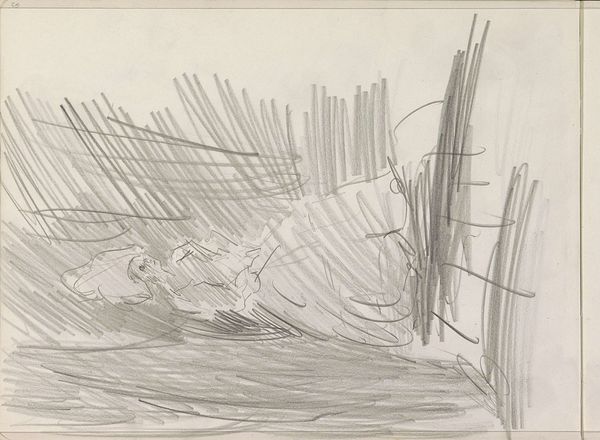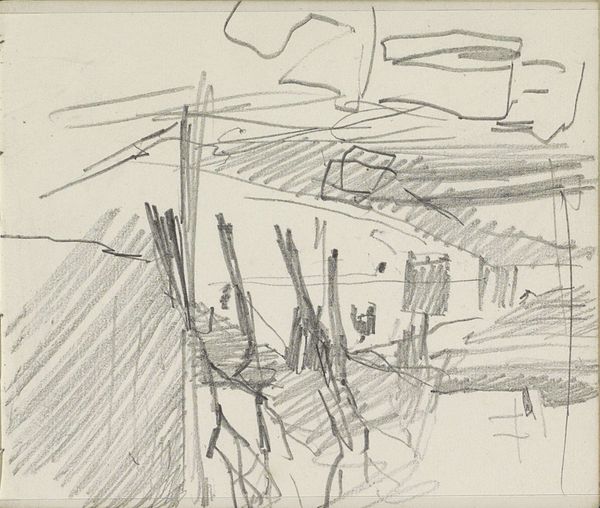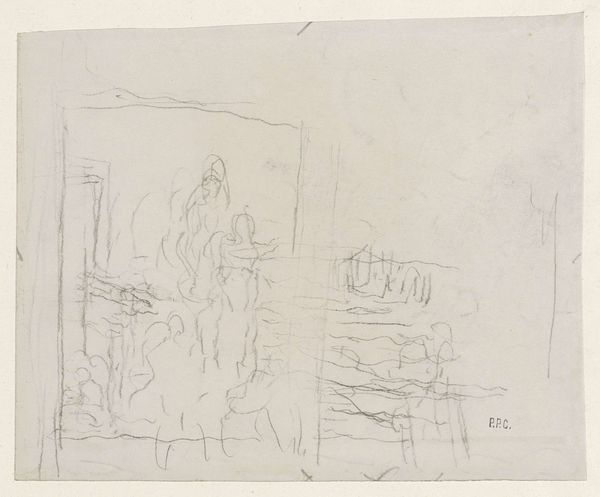
Copyright: Rijks Museum: Open Domain
Art Historian: Here we have Isaac Israels' "Compositiestudie van een landschap, mogelijk met paarden"—a compositional study of a landscape, possibly with horses. It’s believed to have been created sometime between 1875 and 1934. Artist: Oh, I like this. It feels… immediate, like a captured thought. So sparse, but you still get the sense of a vast, open space with those almost ghostly horses implied. The bareness somehow pulls me right in, you know? Art Historian: Indeed. Notice how Israels uses minimal lines, pencil and perhaps pen strokes, to suggest form and movement. The landscape itself is merely hinted at, yet it resonates with a distinct energy, an ephemeral quality. Do you think the suggestion of horses plays into this? Artist: Absolutely! Horses have always been such potent symbols: freedom, power, even grace under pressure. Here, though, they feel fleeting, almost like mirages on the horizon. As an artist myself, this kind of captured motion inspires me: the essence of a moment rather than precise detail. Art Historian: Horses carry an array of symbolic weights depending on cultural context: in some cultures a sign of wealth, war, or simply transport. However, these horses appear more ethereal—not grand steeds of power, but figures caught in a moment, barely tethered to the ground or the artist’s intention. Perhaps studies such as this informed his later, more fully realized works? Artist: Could be. Or maybe Israels was onto something with this bare-bones approach. There's a vulnerability in leaving things unfinished. It allows the viewer's imagination to run wild, complete the story, which can be so much more engaging than spelling it all out. The negative space is working hard! Art Historian: You raise a crucial point. By leaving elements undefined, Israels invites collaboration, allowing the observer to fill in the emotional and visual gaps. It speaks to the beauty of imperfection, the allure of the sketch, the intimate conversation between artist and viewer. Artist: Yeah, it’s like stumbling across a private page from his sketchbook. Feels like an invitation, doesn’t it? So glad I stopped to look more closely. Art Historian: Me too. The unfinished quality invites us to consider what truly matters in capturing a landscape and its subjects—the underlying essence beyond mere representation.
Comments
No comments
Be the first to comment and join the conversation on the ultimate creative platform.
